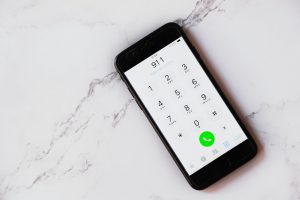Strokes are more common than you might think: they are one of the leading causes of death and disability in the US. According to the CDC, each year almost 800,000 people suffer a stroke. Nearly three-quarters of all strokes occur in people over the age of 65, and the risk of having a stroke more than doubles each decade after the age of 55. Strokes can have devastating and long-lasting impacts, but spotting a stroke quickly could mean reducing the damage done. The earlier you can get help, the better, so it is vital to know what to watch out for.

Spotting The Signs Of A Stroke
Strokes happen suddenly when blood flow to the brain is disrupted or cut off. Once this happens, brain cells start dying; the more brain cells that die, the higher the risk of becoming paralyzed or dying. The classic warning signs of a stroke to look out for are simple – use the acronym B.E. F.A.S.T. to remember them:
- B – Balance. Sudden dizziness, loss of balance or coordination.
- E- Eyes. Sudden trouble seeing out of one or both eyes
- F- Face. Facial weakness or uneven smile
- A– Arm. Weakness or inability to raise both arms evenly
- S– Speech. Impaired, slurred speech, and/or difficulty repeating back simple phrases
- T– Time. Every second counts, so call 911 immediately
Additional Symptoms Of A Stroke
Strokes can also cause:
- Sudden confusion, trouble speaking, or understanding others when they speak

Chest pain is also a sign of a stroke. - Hiccups
- Sudden severe headache with no known cause
- Chest pain
- Feeling weak all over
- Rapid heartbeat
- Shortness of breath
What To Do If You Suspect a Stroke
A stroke victim needs treatment right away. If any of the common warning signs are present, use the F.A.S.T test to help determine whether someone is having a stroke:
- F (Face) – Ask the person to smile, and if one side of their face droops or the smile is uneven, that’s a sign of weakness or numbness in the face, which could indicate a stroke.
- A (Arms) – Ask the person to raise both arms, and if one arm drifts downwards, that’s a sign of weakness on one side of their body.
- S (Speech) – Ask the person to repeat a simple phrase. Slurring, sounding strange, or being unable to repeat the phrase are tell-tale signs of a stroke.

- T (Time) – If the person shows any of these symptoms, get help immediately by calling 911. Let the operator know what time the test was given so they can estimate when the stroke occurred.
Even if symptoms go away, that doesn’t mean that the person is in the clear; a mini-stroke can last up to 24 hours. Any sign of a stroke could mean lasting damage, because these symptoms indicate that brain cells have begun to die. It is better to be on the safe side, so even if symptoms seem to pass, go to the emergency room or call 911. A health professional can administer tests, and can help to get the condition under control in order to reduce the risk of a stroke in the future. Every minute counts!
